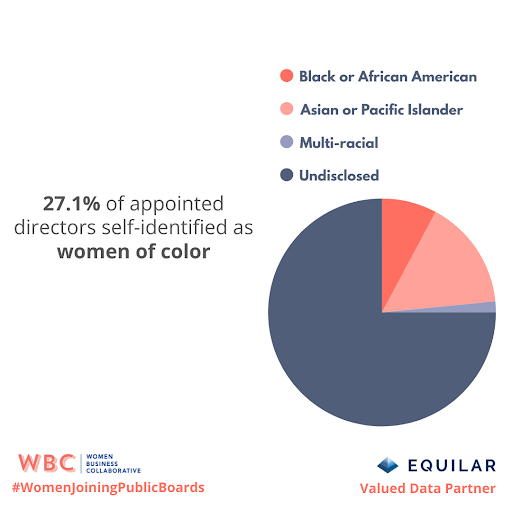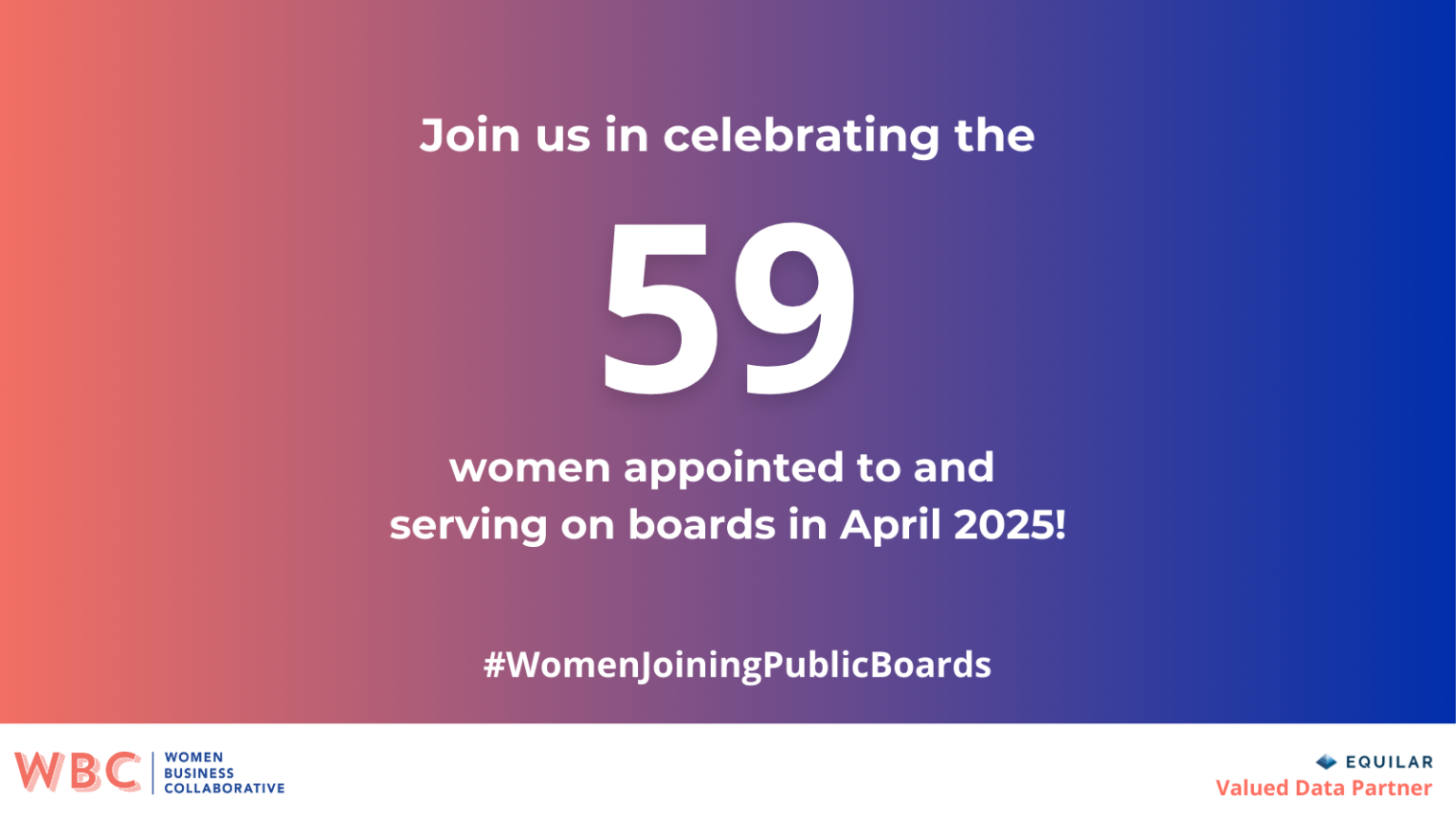April 2025 Report Summary
Companies continue to diversify board composition by appointing women to public company boards.
Women comprised 25.1% of new appointments to public boards of directors, with 59 women and 176 men appointed in April 2025.

The pressure to increase diversity at the board level remains critical to ensuring the advancement of women in boardrooms and professional environments overall.
While only 27.2% of the newly appointed women board members chose to self-disclose their race or ethnicity, boards must continue to prioritize both gender and racial diversity. The data continues to highlight the value of disclosure, as data gaps inhibit advocates and allies from understanding the complete picture of women’s representation on boards, especially for women of color (WOC), and where progress can be made.
In April, women who self-identified as Asian / Pacific Islander were represented highest in board appointments, with 10 women appointed to boards, making up about 16.9% of all appointed women.

Of the newly women appointed to the boards of public companies, 25 women, or 42.4%, were first-time board appointments. In April, Consumer Cyclical companies led the way in the appointment of women board directors with 18.6% of total appointments. Financial Services companies followed closely behind with women filling 13.6% of newly appointed board memberships.

Additionally, women affiliated with WBC Partner organizations also touted appointments in October, including Julie A. Beck of Ellevate Network; Melissa K. McSherry of Women’s Forum of New York; and Kimberly Y. Chainey of Women’s Forum of New York.
Finally, WBC acknowledges companies leading the way this month include Classover Holdings, Inc., which had the most reported women’s board appointments.
Equilar and WBC are tracking and analyzing the growth and rotation of board seats on public companies and the expanding candidate pool. Through our partnership, we will continue to track and analyze not only the count, diversity and profile of the women appointed to boards; but also the companies and industries where women are leading.






